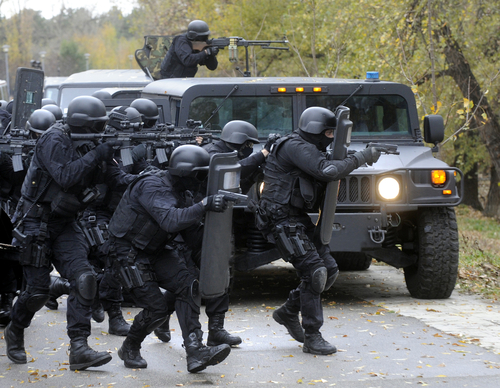Listen To Story Above
Democratic presidential candidate Kamala Harris is set to campaign in Michigan on Sunday, while her Republican opponent Donald Trump plans to visit three eastern battleground states in the final stretch of a closely contested election.
Recent polls indicate a tight race, with both campaigns acknowledging uncertainty about the outcome in seven key states that are likely to determine Tuesday’s result.
An unexpected poll showing Harris leading in Iowa, a state Trump easily won in previous elections, has raised eyebrows. However, another survey suggests she’s trailing there.
Harris is scheduled to appear in East Lansing, Michigan, a college town in a crucial industrial state for the Democratic campaign. She faces challenges in winning over some of the state’s 200,000 Arab Americans, who are disappointed with her handling of the Gaza conflict and U.S. aid to Israel. Trump, who visited Dearborn on Friday, promised to end Middle East wars.
FRAUD: CNN just exposed Kamala Harris for running anti-Israel ads in Michigan and pro-Israel ads in Pennsylvania. Trump should just run them for her in reverse… pic.twitter.com/sgw5QAG8ok
— @amuse (@amuse) November 2, 2024
Trump’s Sunday itinerary includes rallies in three smaller cities, targeting his rural base. He’ll start in Lititz, Pennsylvania, then head to Kinston, North Carolina, before concluding in Macon, Georgia.
This marks the first day since last Tuesday that the candidates aren’t campaigning in the same state. On Saturday, their planes shared tarmac space in Charlotte, North Carolina, where both held rallies. Harris later made a surprise appearance on “Saturday Night Live” in New York.
In her final campaign push, Harris has focused on addressing cost of living concerns and portraying Trump as a divisive figure. She emphasized the opportunity to move past Trump’s polarizing approach to politics during her Charlotte rally.
Trump, meanwhile, has sought to hold Harris accountable for rising prices and immigration issues, framing the latter as a critical challenge to the nation. He vowed to address immigration concerns during his Greensboro rally.
JUST IN: Mayor of Hamtramck, Michigan Amer Ghalib, absolutely rips Kamala Harris for having 'bloodthirsty' Liz Cheney as her top military advisor.
Hamtramck is the only Muslim-majority city in the US.
Ghalib is warning Muslims that Harris and Cheney would send Americans to… pic.twitter.com/Pn3TDQpx6N
— Collin Rugg (@CollinRugg) November 1, 2024
With over 75 million Americans having already voted, the election’s outcome might not be known for days, particularly in states like Pennsylvania that require time to count mail-in ballots.






